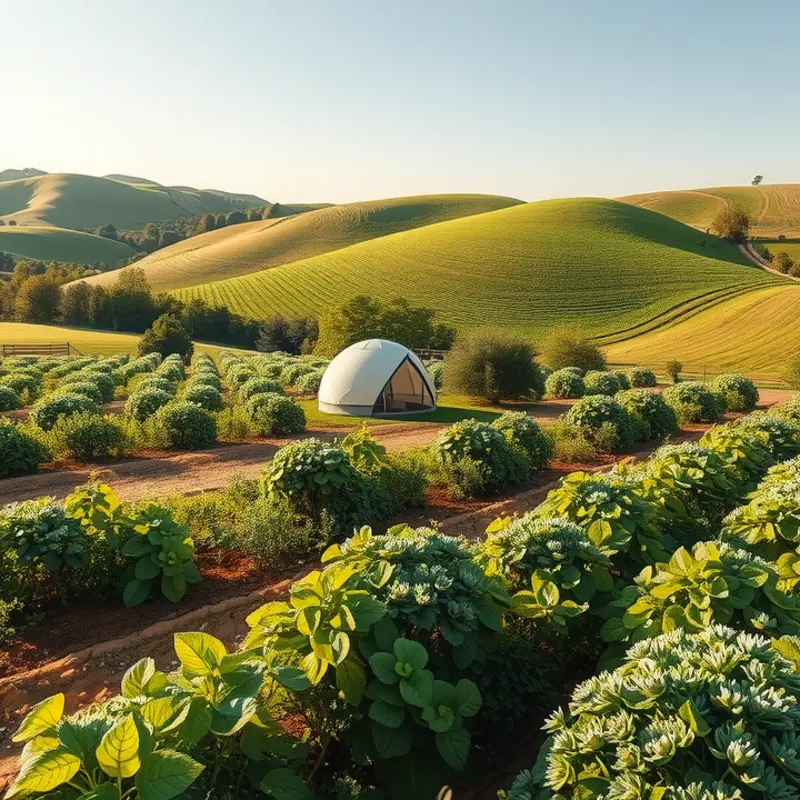In an era where plant-based diets are gaining popularity, one common concern is whether vegetables can provide sufficient protein. This question is crucial for vegetarians, vegans, and anyone interested in incorporating more plant foods into their meals. Understanding the protein content in vegetables and how to balance your diet can help alleviate worries and empower better nutritional choices.
Evaluating Plant-Based Protein Sources

Exploring plant-based protein sources involves diving into the varied world of vegetables, legumes, and grains. Each category offers its own unique amino acid profile, which is essential for maintaining nutritional balance. Understanding the nuances of these profiles helps in crafting diets that not only meet protein needs but also support overall health.
Legumes and Pulses
Legumes are an outstanding source of protein. Lentils, chickpeas, and various beans pack a punch in terms of both protein content and amino acid variety. Lentils, for instance, provide about 18 grams of protein per cooked cup, with a favorable amino acid profile, though they are somewhat low in methionine. Similarly, chickpeas offer a solid protein content, yet they also lack sufficient methionine. Combining legumes with grains, such as rice or quinoa, can help achieve a more complete amino acid profile.
Vegetables Rich in Protein
Certain vegetables, though not as protein-dense as legumes, still contribute significantly. Vegetables like broccoli, spinach, and brussels sprouts provide 3 to 5 grams of protein per cooked cup. These are particularly rich in lysine, but similar to legumes, they require complementing with other foods for a complete amino acid spectrum. Diversity in vegetable consumption not only improves protein intake but also enhances the fiber and micronutrient content in meals.
Grains and Pseudo-cereals
Grains such as whole wheat, oats, and brown rice, alongside pseudo-cereals like quinoa and amaranth, are beneficial for achieving a balanced plant-based protein intake. Quinoa, for example, is often heralded for its complete protein status, meaning it has all nine essential amino acids. At around 8 grams of protein per cooked cup, it serves as an excellent base for meals. Incorporating a variety of grains ensures a well-rounded amino acid intake and provides the body with digestible energy sources.
Combining Foods for Optimal Intake
Creating dishes that combine these protein sources can make a vegetarian or vegan diet more effective in meeting protein requirements. For instance, pairing black beans with corn tortillas or hummus made from chickpeas with whole-wheat bread allows for complementary protein effects. Such combinations ensure that the body receives all essential amino acids and supports muscle maintenance and growth.
For those interested in integrating a plant-based diet with minimal fuss, exploring easy plant-based eating habits can provide practical tips on building balanced meals efficiently. These habits help in sustaining a nutritious diet with less effort, making the transition to plant-based protein sources smoother.
By evaluating the protein content and amino acid profiles of these plant-based sources, any individual can craft a diet that meets or exceeds their protein requirements. Diversity is key, as is the strategic pairing of foods, to ensure a well-balanced intake.
Maximizing Protein Intake from Vegetables

For those relying on vegetables as a primary protein source, understanding how to enhance protein intake is essential. Combining the right foods and using appropriate preparation methods can significantly increase protein availability from plant-based sources.
First, it’s important to acknowledge that most vegetables contain incomplete proteins, which means they lack one or more essential amino acids. However, by strategically combining different plant-based foods, you can achieve a complete protein profile comparable to that of animal products. A classic example is the combination of legumes, like lentils or chickpeas, with grains such as rice or quinoa. This pairing ensures you’re getting all essential amino acids in one meal.
Variety is crucial. A diverse diet not only exposes you to a broader range of amino acids but also ensures you’re receiving other vital nutrients. Different vegetables contain different amounts of protein. Spinach, kale, and broccoli are among the higher-protein vegetables. Incorporating these into meals can boost overall protein intake.
Another method to maximize protein from vegetables is employing proper cooking techniques, such as soaking and sprouting. These methods can enhance nutrient absorption by breaking down anti-nutrients like phytic acid that inhibit mineral absorption. Sprouting beans and seeds increases their protein content and bioavailability. Including sprouted grains and legumes in salads or as toppings for dishes can be both nutritious and tasty.
Also, understanding the role of cooking in nutrient absorption is beneficial. Slightly cooking vegetables like broccoli and spinach can make amino acids more accessible by breaking down cell walls. However, overcooking can lead to nutrient loss, so it’s about finding the right balance. Light steaming is often the best way to preserve both protein and other nutrients.
Incorporating fermented foods, like tempeh or fermented vegetables, can improve gut health, which in turn enhances the body’s ability to assimilate nutrients more efficiently. Fermented products provide probiotics that help with nutrient uptake, aiding in maximizing the protein obtained from vegetables.
For those interested in upping their protein intake through plant-based means, a focus on meal planning can be helpful. Preparing meals like vegetable stir-fries with tofu or using nuts in a variety of dishes ensures you don’t miss out on any protein. Consider checking out this guide on minimal prep dinner ideas for more inspiration on incorporating protein-rich vegetables into your meals without a hassle.
In summary, while vegetables alone might struggle to meet high protein needs, a thoughtful combination of foods, preparation methods, and meal planning can make a vegetable-based diet much more protein-rich. Exploring these strategies opens up a wide array of culinary possibilities and ensures your protein needs are fully catered to.
Final words
Vegetables can indeed be a significant source of protein when included as part of a well-balanced diet. By diversifying your intake of plant-based foods and combining different sources, you can ensure that your protein needs are met without solely relying on animal products. Incorporating legumes, grains, nuts, and seeds alongside vegetables will help you achieve a nutritious profile that supports your overall health. This approach not only nourishes your body but also aligns with sustainable eating practices.








